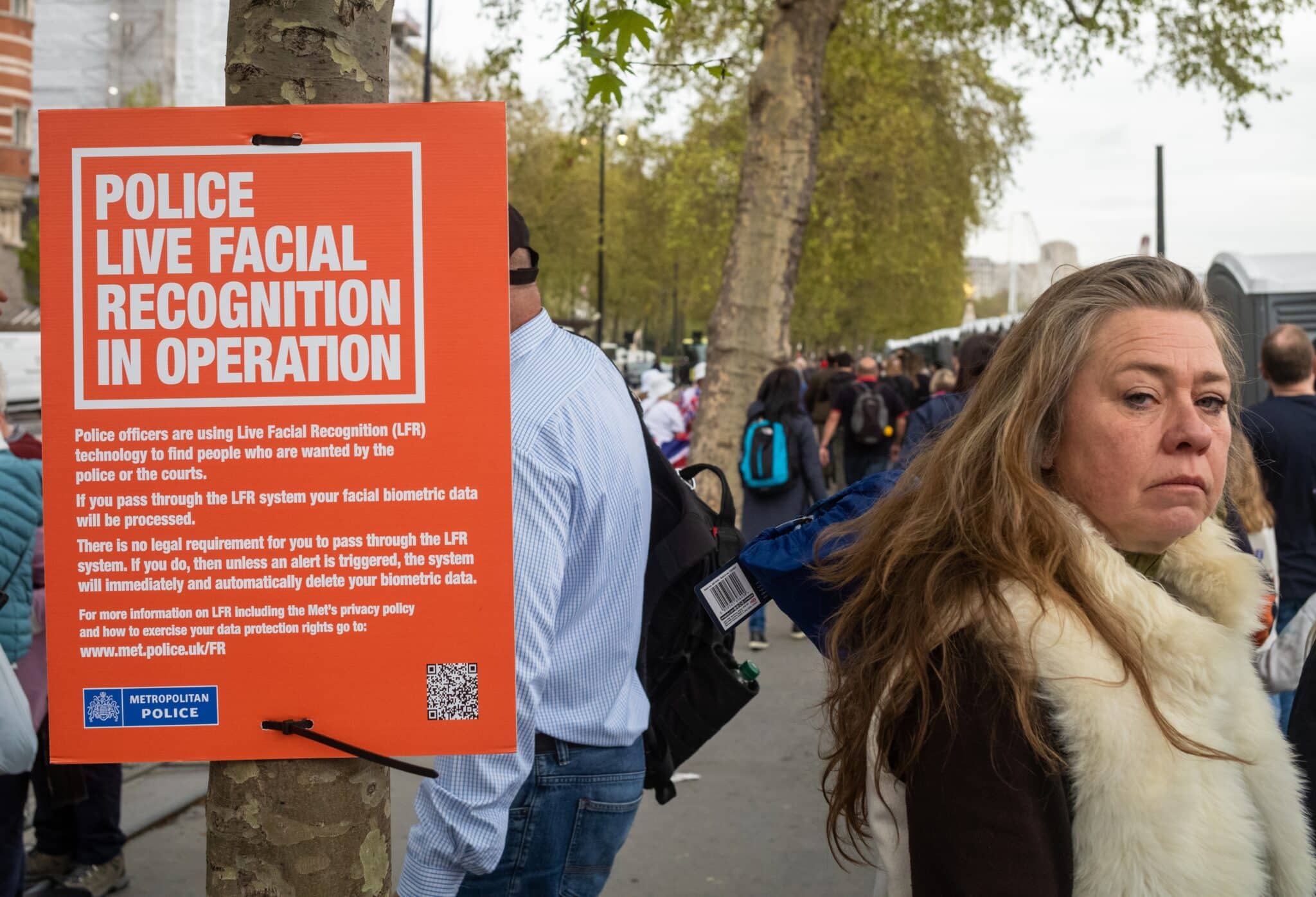More deployments of live facial recognition in public spaces in England and Wales will be made possible by the rollout of 10 new vans equipped with LFR technology to seven police forces, according to a Home Office announcement. The introduction of the additional vans will be accompanied by government consultations to help shape the legal framework currently in development.
The announcement notes that the operation of the new vans is bound by “strict rules,” and that they will only be used “when there is specific intelligence.”
The announcement emphasizes that the deployments are governed by guidance from the College of Policing.
London’s Metropolitan Police force announced at the end of July its intention to increase deployments of live facial recognition by 150 percent, from four over two days to 10 over five days. LFR vans were deployed 256 times in the UK last year, but Met Police only had four to work with.
LFR deployments by the Met netted 580 arrests in the past 12 months, including for breaches of conditions by 52 registered sex offenders.
NPCC Lead for Facial Recognition Lindsey Chiswick argues that she is confident extending LFR to other police forces will help improve community safety.
“Each Live Facial Recognition deployment will be targeted, intelligence-led, within a set geographical location and for defined period of time, ensuring deployments are proportionate, lawful and necessary,” she says.
The force is also reportedly installing fixed LFR cameras.
The consultation will explore how to use live facial recognition and what safeguards and oversight will ensure transparency and public trust in the tech. The findings will inform the new legal framework for the use of LFR referred to by Home Secretary Yvette Cooper in a hearing by a House of Lord Committee in July.
Transparency is a going concern, with news that searches of national passport and immigration databases by UK police have quietly surged.
A Sky News reporter notes that the 14 deployments so far in 2025 by South Wales Police have scanned over 1.6 million faces and resulted in 15 arrests. He asked Cooper if those figures represent “proportionate” use. Cooper replied that non-matching images are deleted within 0.2 seconds, and that the deployments are targeted. She also acknowledged the need for greater transparency.
The announcement refers to the overall strategy of the Neighbourhood Policing Guarantee, under which “named, contactable officers” have been assigned to every neighborhood in England and Wales.
Audit results coming soon
As the UK awaits an official legal basis for police use of live facial recognition, the Information Commissioner’s Office (ICO) is preparing to publish the results of its audit into the use of facial recognition by police in South Wales and Gwent.
“Facial Recognition Technology (FRT) does not operate in a legal vacuum. It is covered by data protection law, which requires any use of personal data, including biometric data, to be lawful, fair and proportionate. When used by the police, FRT must be deployed in a way that respects people’s rights and freedoms, with appropriate safeguards in place,” the ICO said in a statement Wednesday.
“FRT is a priority for the ICO due to its potential benefits and risks. We play an important role ensuring police are compliant with data protection law and that people’s rights are protected, including by providing clear guidance on the use of FRT and undertaking regular audits of police forces, so that the public can have confidence in how the technology is used. We have recently concluded our audit of South Wales Police and Gwent Police and will be sharing our findings shortly.”
The results of those audits could help alleviate public concerns about the technology, which former UK Biometrics & Surveillance Camera Commissioner Fraser Sampson pointed out in a recent column is the element that is often inadequately addressed in law enforcement LFR plans.
“We understand the concerns which are raised about the use of live facial recognition technology and we use any new technology ethically and spend time and effort making sure it’s deployed in line with all legislation and guidance,” says South Wales Police Superintendent Tim Morgan in the announcement of the new vans.
“It is important to remember that use of this has never resulted in a wrongful arrest in South Wales and there have been no false alerts for several years as the technology and our understanding has evolved.
“The level of oversight and independent scrutiny means that we are now in a stronger position than ever before to be able to demonstrate that our use of facial recognition technology is fair, legitimate, ethical and proportionate.”
Related Posts
Article Topics
biometric matching | biometrics | facial recognition | Information Commissioner’s Office (ICO) | London Metropolitan Police | police | real-time biometrics | South Wales Police | UK
Latest Biometrics News
Through this past spring and summer, the Social Security Administration’s (SSA) rules for changing direct deposit information by phone have…
The growing volume of deepfake fraud and increasing sophistication of the technology is forcing researchers to consider how to confirm…
Poland is launching another campaign to draw users to its national digital identity platform to speed up its sluggish growth….
Signicat has added another European digital identity to its unified electronic ID platform, as it pursues its plans to become…

